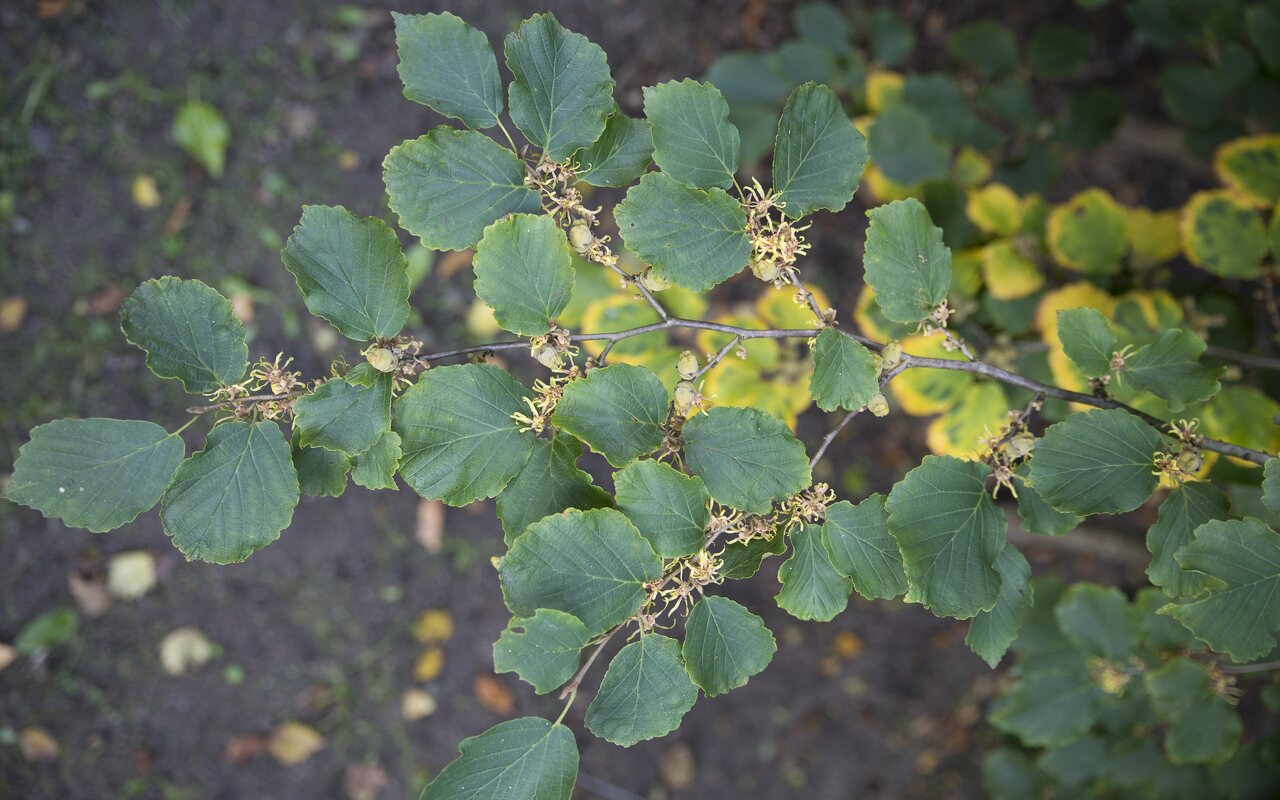
Hamamelis virginiana · sodinis hamamelis
- witch-hazel, common witch-hazel, American witch-hazel, beadwood
- Virginische Zaubernuss, Herbstblühende Zaubernuss, Virginischer Zauberstrauch
- sodinis hamamelis
- Virdžīnijas burvjulazda
- oczar wirginijski
It is native to eastern North America, from Nova Scotia west to Minnesota, and south to central Florida to eastern Texas.
Hamamelis virginiana is a small, deciduous tree or shrub growing up to 6 m tall, often with a dense cluster of stems from its base. The bark is light brown, smooth, scaly, inner bark reddish purple. The branchlets are pubescent at first, later smooth, light orange brown, marked with occasional white dots, finally dark or reddish brown. The foliage buds are acute, slightly falcate, downy, light brown. The leaves are oval, 4–17 cm long and 2.5–13 cm broad, oblique at the base, acute or rounded at the apex, with a wavy-toothed or shallowly lobed margin, and a short, stout petiole 6–15 mm long; the midrib is more or less hairy, stout, with six to seven pairs of primary veins. The young leaves open involute, covered with stellate rusty down; when full grown, they are dark green above, and paler beneath. In fall, they turn yellow with rusty spots. The leaf stipules are lanceolate, acute; they fall soon after the leaf expands.
The flowers are pale to bright yellow, rarely orange or reddish, with four ribbon-shaped petals 1–2 cm long and four short stamens, and grow in clusters; flowering begins in about mid-fall and continues until late fall. The floral calyx is imbricate in bud, deeply four-parted, very downy, and orange brown within. Two or three bractlets appear at base. The fruit is a hard woody capsule 10–14 mm long, which splits explosively at the apex at maturity one year after pollination, ejecting the two shiny black seeds up to 10 m distant from the parent plant.
Hamamelis virginiana flowers from late September to late November, occasionally in December. The pollinated ovary, protected by a persistent calyx, enters a resting state during the winter months. Fertilization of the ovary is delayed until the following spring, usually about the middle of May, which is 5–7 months after pollination. The fruits develop over the course of the growing season, reaching maturity in late August. As the ripe fruit dries and dehisces, the seeds are ballistically ejected, typically by late October. The empty seed pod remains attached to the plant, sometimes for months. The seeds lie on the ground for two winters before sprouting.
Tai 2-3 m aukščio dekoratyvinis krūmas su išskėsta šakota laja. Žiedai geltoni, kvapūs. Žydi rugsėjo – lapkričio mėn. Kartais pakartotinai žydi pavasarį. Dauginamas sėklomis, atlankomis. Auga lėtai. Natūraliai auga Šiaurės Rytų Amerikoje.
2252
0 comments
Add a comment